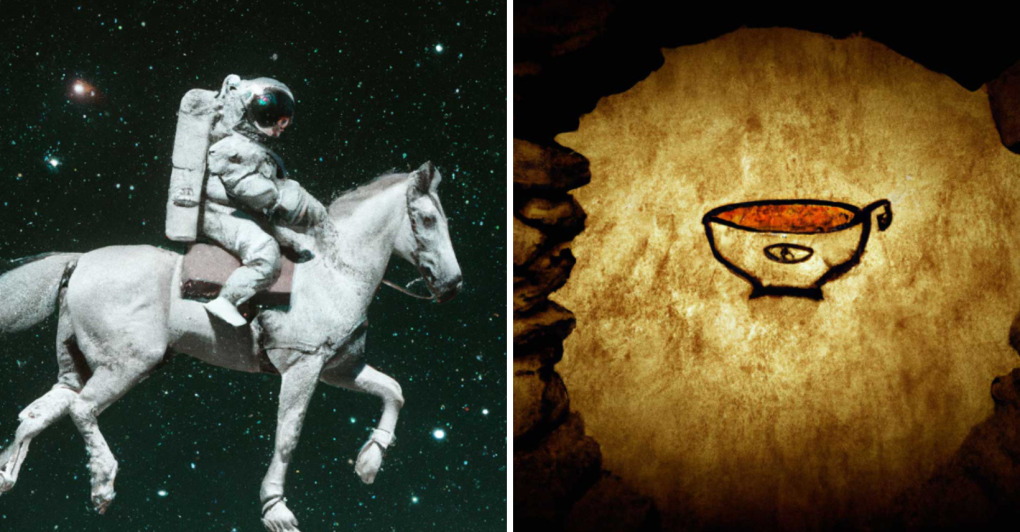"An astronaut riding a horse in a photorealistic style" or "a bowl of soup that is a portal to another dimension drawn on a cave wall," are just some of the infinite prompts you can offer to a new artificial intelligence (AI) system called DALL-E 2 to generate a piece of art for you.
Currently operating on a limited scale, with a waitlist available for professional artists, developers, or online creators, DALL-E 2 has been developed by a Microsoft-backed start-up called OpenAI and offers a text-to-picture service through artificial intelligence models.
OpenAI describes DALL-E 2 on its website as "a new AI system that can create realistic images and art from a description in natural language."
The new software builds on its original system called DALL.E, which was launched in 2021, generates higher-resolution pictures and offers more accurate results, according to OpenAI’s website.
"What DALL-E 2 does is basically something that until now had been considered one of the jobs that was automation-proof," Amol Kamath, a Toronto-based industrial designer told CTVnews.ca in a phone interview.
"It's been a long-held belief in my field that because what we do is creative, artificial intelligence is not ever going to be able to replace us. But, given what they've been able to do with this piece of software, where you can effectively just give a machine a prompt and it will give you back what it thinks is the best representation of that product, it is amazing. Previously, that would`ve been the domain of a graphic designer or an illustrator."
Kamath thinks it's unlikely that AI software will replace human designers completely, but rather that more simplistic assignments could potentially be handed off to machines.
“An example of a lower level project would be perhaps a newsletter assignment for a school or that a small entrepreneur looking for promotional materials... these can easily be done by a machine instead of a human,” he said.
Kamath says that for the above categories, companies may stop relying on freelancers or lower-level designers for assignments and start depending more on software.
The software is already being experimented with on monumental scales. On Monday, DALL-E 2 became the first AI software to design a magazine cover for Cosmopolitan magazine, which was facilitated by a group of the magazine's editors, researchers at OpenAI and digital artist Karen X. Cheng.
A similar experiment was completed at the Economist last week, which used a different AI bot to generate an image for the cover of their report on AI technology.
OpenAI has acknowledged on its website the possible concerns of using only AI-generated art forms and is conducting studies on its limitations that include removing the use of explicit content, that includes violent, adult or political ones.
“Ethical considerations and bias will always be a factor in the design world,” said Kamath.
“But, DALL-E 2 could be the final frontier for automation. And I think whenever they do actually come up with a finished product... it could put quite a lot of people out of work.”










































